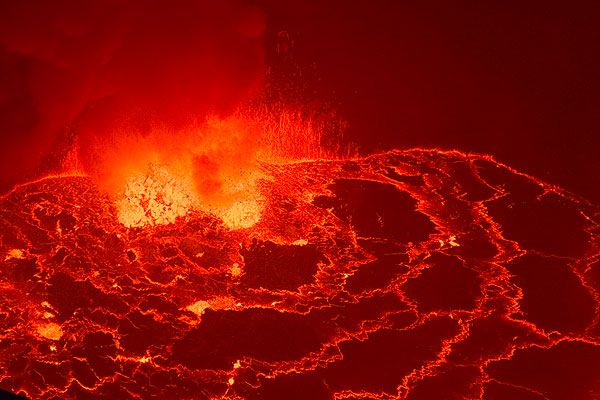The volcanic eruption of Nyiragongo in North Kivu province in eastern Democratic Republic of Congo has displaced several people in Goma. Some headed to the town of Bukavu in South Kivu and others to Kigali in Rwanda to escape the lava flow and the repeated earthquakes.
Last week, local authorities ordered the evacuation of a dozen neighborhoods exposed to dangers linked to the eruption of the Nyiragongo volcano.
Among the recommended places where the population should go are Sake, 25 km from the city of Goma. A few days before, cases of cholera had been reported there.
Between May 27 and May 29, the region recorded 12 suspected cases of cholera among the displaced, including nine children, according to the Office for the Coordination of Humanitarian Affairs (OCHA).
With more than 56,000 people moving to Sake, the cholera epidemic could also spread to the city of Goma and its surroundings.
Prevent cholera in times of crisis
According to Vicky Kij, Chief Medical Officer of Tshamilemba Health Zone in Lubumbashi in Haut-Katanga, it is always possible to avoid the worst during this period of cholera in Sake.
“Two-dose vaccination, environmental hygiene and the provision of safe drinking water are the means of preventing cholera. This is also the reason why here in Lubumbashi, we have opted for vaccination in some neighborhoods of the municipality of Kampemba to limit the spread of this disease. She said into our microphone.
Given the emergency imposed by the volcanic eruption, vaccination of populations before their displacement would not be possible. Environmental hygiene and drinking water supplies are said to be effective means of fighting cholera in this part of North Kivu province, say several health experts.
It should be noted that after the evacuation of the city decided by the authorities on May 27, around 400,000 people are said to have left Goma. Apart from Bukavu, the main relocation centers are the towns of Sake in North Kivu, Rutshuru and Minova in South Kivu.
But according to OCHA, the greatest concern for the displaced remains the supply of drinking water, hygiene and sanitation, to reduce or avoid the risk of an outbreak of cholera, endemic to the area. A case of cholera has already been confirmed among the displaced.
In a statement released on May 28, UNICEF appealed for emergency international aid to prevent the disease that threatens to be a disaster for children.
